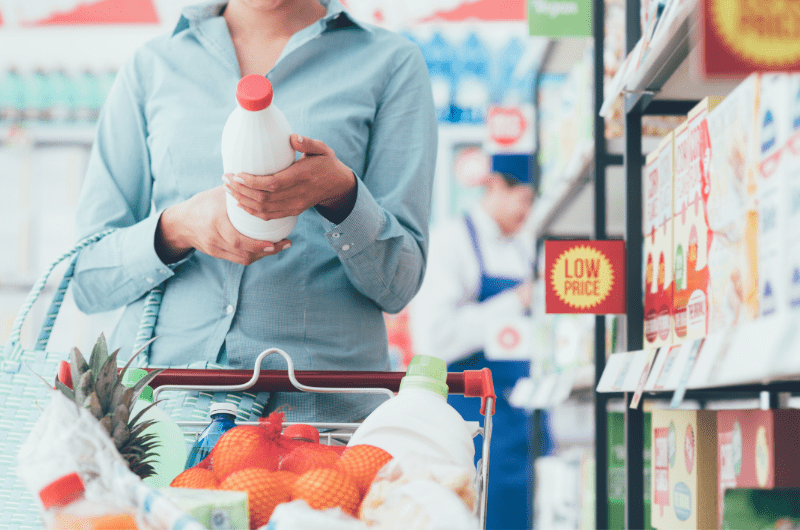Since the FSMA 204 food traceability law passed in January 2023, companies who make, manufacture, pack or hold foods on the Food Traceability List (FTL) have been warming to the idea that traceability is here and that compliance is unavoidable. Companies across the supply chain are beginning to take action, forming cross-functional teams, scheduling Traceability Assessments, and researching solutions. The industry has certainly taken notice, but is traceability even on the radar for consumers?
Recently, Consumer Reports published an article ranking the USDA and FDA foods linked to the most serious recalls and disease outbreaks in recent years. Of the foods on the list that are regulated by the FDA, many are included on the FTL making them subject to more traceability recordkeeping under the FSMA 204 law. Leafy greens, for example, are listed on the FTL and also top the Consumer Report list with more than 4 million cases recalled from 2017-2022. Several other FTL products made the list including precut cantaloupe, honeydew, and watermelon; whole cantaloupes and papayas; and soft cheeses. The article goes on to provide food safety tips for consumers also also explores what’s being done from a regulatory perspective to protect them.
What’s on the Food Traceability List (FTL) and will it grow?
The Food Traceability List (FTL) was generated from a risk ranking model that considers the following factors:
- frequency of outbreaks and occurrence of illnesses
- severity of illness
- likelihood of contamination
- growth potential, with consideration of shelf life
- manufacturing process contamination probability and industrywide intervention
- consumption
- cost of illness
The FTL is based on an objective, data-driven, risk-ranking model, and items will be added if and when the FDA determines that a food has achieved a qualifying score. The FDA has made it clear in public statements that the industry is encouraged to voluntarily expand traceability broadly across all food products.
When comparing the two lists, it’s also important to consider that if USDA-regulated products like poultry, pork and beef are removed from the Consumer Reports list, many other FTL products including produce and seafood would likely move up in the ranking of most recalled foods.
Are your systems – and people – ready for FSMA 204 food traceability? Probably not.
While the goal of FSMA 204 food traceability is faster identification and removal of potentially contaminated food from the market, complying with the regulation also presents challenges related to technical resources and labor.
Consider that data needs to be collected each time an FTL food product changes hands or changes form. Labeling can only contain information that is static, but FSMA 204 food traceability also requires dynamic information. In other words, the flow of information needs to be fluid as the item moves along the supply chain. But that’s not something most shipping, receiving or warehouse management systems are configured to do. Your systems will need to change.
Additionally, it’s important to note that although it may be the QA/QC and Food Safety teams who are championing FSMA 204 compliance in your organization, true preparedness requires involvement from your total organization. Food traceability is a supply chain problem.
As with any significant business change, it’s important to secure buy-in from every individual and department at the very start of your enhanced food traceability project. By doing so, you’ll facilitate a smoother implementation process. Furthermore, departments that are on board are more likely to embrace change, adapt to new ways of working and support the necessary transition activities.
Capturing, creating and exchanging information requires involvement from operations, information technology (IT) and merchandising, all the way up to the chief financial officer (CFO) and CEO. Buy-in from the CFO and CEO is crucial for success because they determine the course of any business and budget.
How much time will it take to do traceability?
If you harvest or handle foods on the FTL, now is the time to accelerate the pace of your FSMA 204 food traceability compliance plan. The law becomes enforceable in January 2026, which means you have just over 24 months to make changes to your systems and labor models. Take action now by forming cross-functional teams, scheduling a Traceability Assessment, and researching solutions.
Now that consumers are aware of the regulation, even more pressure will be put on companies to create a safer, more transparent food supply chain through tech-enabled recordkeeping. Consumer Reports calls the FDA’s food traceability rule (FSMA 204) “encouraging” and provides more detailed article with information to consider.
The ReposiTrak Traceability Network® already represents more than 8% of retail supermarkets. If you’d like to learn more about food traceability and start the conversation about what compliance means for your unique operation, please contact ReposiTrak Chief Customer Officer Derek Hannum at dhannum@repositrak.com.

